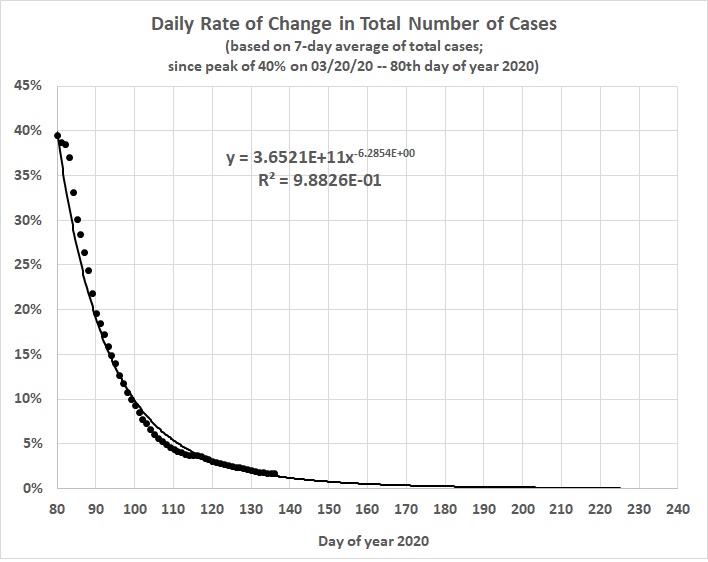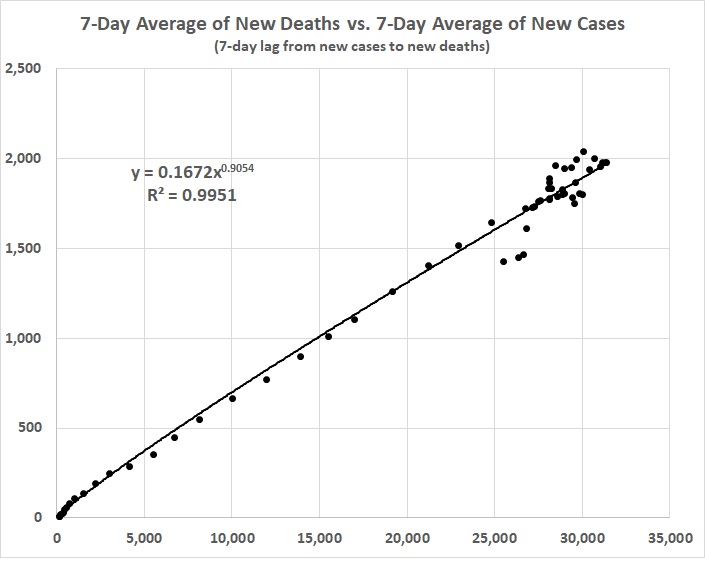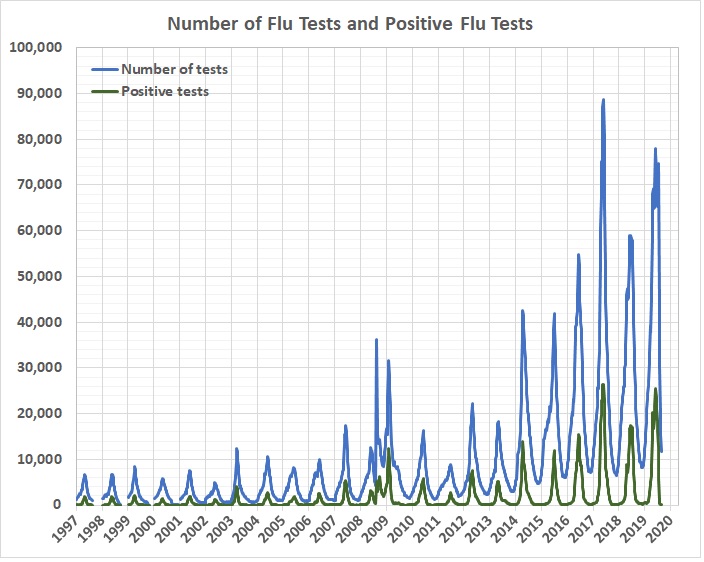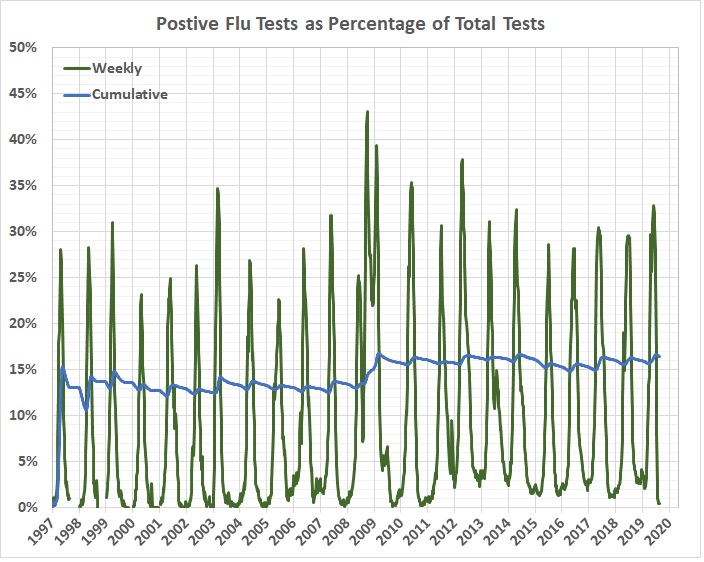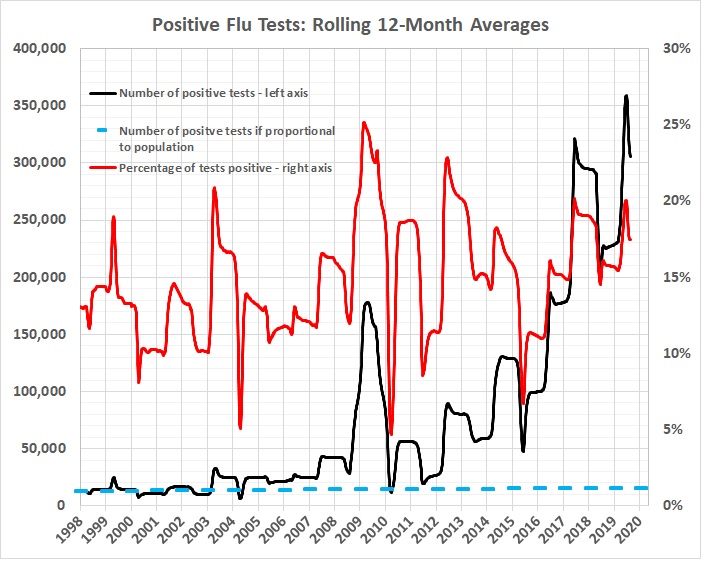In case you haven’t seen my page “Obamagate (a.k.a. Spygate and Russiagate)“, which I’ve just updated, I’m reproducing it below. But you should go there from time to time because the list of related reading at the bottom of the page keeps growing, and is certain to expand greatly in the coming weeks and months.
I have added to the list of related reading at the bottom of this page many times since publishing it on August 31, 2018. There have, however, been only two substantive revisions (noted by boldface), neither of which has altered my original thesis about the origin and purposes of the conspiracy. On 05/03/20 I included former FBI director James Comey as a full-fledged member of the post-election phase of the conspiracy, based on Andrew McCarthy’s article of 05/02/20 (see “related reading”). On 05/12/20 I limited former deputy AG Sally Yates’s role to the post-election phase (based on McCarthy’s article), and (based on Francis Menton’s article of 5/11/20) I acknowledged the possibility that the post-election phase of the conspiracy was really meant to be a coverup of the pre-election attempt to discredit Trump with the Steele dossier. Also, in view of the confirmation of Obama’s central role in the conspirace, which I had posited from the beginning, I began on 05/11/20 to refer to the affair as Obamagate.
The persecution of General Flynn, as it turns out, was an essential element of the post-election coverup attempt. See McCarthy’s article of 05/20/20 for a complete explanation.
Neither Donald Trump nor anyone acting on his behalf colluded with Russia to influence the outcome of the 2016 presidential election.
The original story about collusion, the Steele Dossier, was cooked up by the White House and the Clinton campaign. The story was then used to launch a three-pronged attack on Trump and the Trump campaign. The first prong was to infiltrate and spy on the campaign, seeking (a) to compromise campaign officials and (b) learn what “dirt” the campaign had on Clinton. The second prong was to boost Clinton’s candidacy by casting Trump as a dupe of Putin. The third prong was to discredit Trump, should he somehow win the election, in furtherance of the already-planned resistance to a Trump administration. (According to Menton, the effort to discredit Trump may have been just a welcome side effect of the underlying effort to deflect attention from Obama’s role in the pre-election conspiracy to defeat Trump.)
The investigation led by Robert Mueller is a continuation and expansion of FBI investigations that had been aimed at “proving” a conspiracy between the Trump campaign and Russia. Mueller’s investigation was expanded to include the possibility that Trump obstructed justice by attempting to interfere with the FBI investigations. All of this investigatory activity was and is intended to provide ammunition for Trump’s impeachment and removal from office. That would leave a Republican in the White House, but — as with the forced resignation of Nixon — it would weaken the GOP, cause a “Blue wave” election in 2018, and result in the election of a Democrat president in 2020.
(Aside: The effort to brand Trump as a dupe of Russia is ironic, given the anti-anti-communist history of the Democrat party, Barack Obama’s fecklessness in his dealings with Russia, and his stated willingness to advance Russia’s interests while abandoning traditional European allies. Then there was FDR, who was surrounded and guided by Soviet agents.)
Why was it important to defeat Trump if possible, and to discredit or remove him if — by some quirk of fate — he won the election?
- First, Obama wanted to protect his “legacy”, which included the fraudulent trifecta of Obamacare, the Iran nuclear deal, and the Paris climate accord. The massive increase in the number of federal regulations under Obama was also at risk, along with his tax increase, embrace of Islam, and encouragement of illegal immigration (and millions of potential Democrat voters).
- Second, members of the Obama administration, including Obama himself, were anxious to thwart efforts by the Trump campaign to obtain derogatory information about Hillary Clinton. Such information included, but was not limited to, incriminating e-mails that Russians had retrieved from the illegal private server set up for Clinton’s use. That Obama knew about the private server implicated him in the illegality.
In sum, helping Hillary win — with the aid of the CIA, Justice Department, and FBI — was supposed to protect Obama and his “legacy”. One way of doing that was to ensure a victory by Hillary. (The Obama-directed whitewash of her illegal e-mail operation was meant to defuse that issue.) The other way of protecting Obama’s “legacy” was to cripple Trump’s presidency, should he somehow manage to win, and thus hinder Trump’s effectiveness. The media could be counted out to fan the flames of resistance, as they have done with great vigor.
The entire Obamate operation is reminiscent of Obama’s role in the IRS’s persecution of conservative non-profit groups. Obama spoke out against “hate groups” and Lois Lerner et al. got the message. Lerner’s loyalty to Obama was rewarded with a whitewash by Obama’s. Department of Justice and FBI.
In the case of Obamagate, Obama expressed his “concern” about Russia’s attempt to influence the election. Obama’s “concern” was eagerly seized upon by hyper-partisan members of his administration, including (but not limited to):
Valerie Jarrett, Obama’s confidante and chief strategist
CIA Director John (the Red) Brennan (probably Obama’s action officer for the operation)
Director of National Intelligence James Clapper
National Security Adviser Susan Rice
Attorney General Loretta Lynch
Deputy Attorney General Sally Yates, who became Acting Attorney General in the first weeks of the Trump administration, and who was fired for refusing to defend Trump’s “travel ban” (which the Supreme Court ultimately upheld). (Yates didn’t become involved in the conspiracy until after the election, as indicated by Susan Rice’s memo of January 20, 2017, in which she notes that Obama asked Yates and Comey to stay behind after the end of a meeting of January 5, 2020, presumably so that he could fill them in on the effort to frame General Flynn and discuss how they were to deal with the incoming administration. Again, see Menton’s piece dated May 11, 2020 in “related reading”.)
Deputy Associate Attorney General Bruce Ohr, a subordinate of Sally Yates and Christopher Steele’s contact in the Department of Justice
Nelli Ohr, wife of Bruce Ohr, who was hired by Fusion GPS to do opposition research for the Clinton campaign
Deputy FBI Director Andrew McCabe
FBI General Counsel James Baker, in charge of FISA requests and leaker of the Steele Dossier (possibly a dupe)
Peter Strzok, chief of the FBI’s counterintelligence section;
Lisa Page, the FBI attorney (and Strzok’s paramour), who (with Strzok) was assigned to the Mueller investigation.
What about FBI Director James Comey? He was initially an outsider, a nominal Republican in a Democrat administration, and possibly a willing dupe at first (see the pieces by VDH dated August 7, 2018, and Margot Cleveland dated December 20, 2019. But if he was initially a willing dupe with his own agenda, it seems that he had became a full-fledged conspirator by the time of Trump’s inauguration (see the piece by Andrew McCarthy dated May 2, 2020).
Related reading, in chronological order:
National Sentinel: “The Spygate Files: Timeline to the Biggest Political Scandal in American History”
Paul Roderick Gregory, “The Timeline of IRS Targeting of Conservative Groups“, Forbes, June 25, 2013
Jay Sukelow, “Obama’s Fingerprints All Over IRS Tea Party Scandal“, Fox News Opinion, October 20, 2013
Andrew C. McCarthy, “Obama’s Growing Conflict of Interest in the Clinton E-mail Scandal“, National Review, February 3, 2016
Miles Terry, “President Obama’s IRS Scandal: Seven Years & Counting“, ACLJ, August 2016
Andrew C. McCarthy, “Obama’s Conflict Tanked the Clinton E-mail Investigation — As Predicted“, National Review, September 26, 2016
Andrew C. McCarthy, “The Obama Administration’s Uranium One Scandal“, National Review, October 21, 2017
Andrew C. McCarthy, “Was the Steele Dossier the FBI’s ‘Insurance Policy’?“, National Review, December 23, 2017
Andrew C. McCarthy, “Clinton-Obama E-mails: The Key to Understanding Why Hillary Wasn’t Indicted“, National Review, January 23, 2018
George Parry, “Did Fusion GPS’s Anti-Trump Researcher Avoid Surveillance With A Ham Radio?“, The Federalist, March 2, 2018
Andrew C. McCarthy, “In Politicized Justice Desperate Times Call For Desperate Measures“, National Review, May 19, 2018
Andrew C. McCarthy, “The Real Origination Story of the Trump-Russia Investigation“, National Review, May 22, 2018
Sharyl Atkisson, “8 Signs Pointing to a Counterintelligence Operation Deployed Against Trump’s Campaign“, The Hill, May 23, 2018
Julie Kelly, “The Open Secret of the FBI’s Investigation of Trump’s Campaign“, American Greatness, May 25, 2018
Roger Kimball, “For Your Eyes Only: A Short History of Democrat-Spy Collusion“, Spectator USA, May 25, 2018
Daniel John Sobieski, “Jarrett and Obama Are Behind Spygate“, American Thinker, May 26, 2018
Francis Menton, “‘Russia’: Bona Fide Basis for Investigation or Preposterous Cover Story?“, Manhattan Contrarian, May 27, 2018
Michael Barone, “Obama’s Spying Scandal Is Starting to Look a Lot Like Watergate“, New York Post, May 27, 2018
C. Michael Shaw, “Spygate Is a Bigger Scandal Than Watergate“, The New American, May 28, 2018
David Harsanyi, “Obama Says ‘I Didn’t Have Scandals.’ So What Are All These?“, The Federalist, May 29, 2018
Andrew C. McCarthy, “The Obama Administration’s Hypocritical Pretext for Spying on the Trump Campaign“, National Review, May 29, 2018
Andrew C. McCarthy, “Yes, the FBI Was Investigating the Trump Campaign When It Spied“, National Review, May 30, 2018
Scott Johnson, “The Curious Case of Mr. Downer“, Power Line, June 1, 2018
C. Michael Shaw, “FBI’s Violation of Rules in Spying on Trump Campaign Further Exposes Deep State“, The New American, June 1, 2018
Jason Veley, “Confirmed: Barack Obama Was Running the Entire Spygate Operation That Violated Federal Law to Spy on Trump Campaign Officials“, Natural News, June 1, 2018
MJA, “Peter Strzok Asks Lisa Page: ‘You Get All Your OCONUS Lures Approved?’“, iOTWReport.com, June 5, 2018
Andrew C. McCarthy, “Clinton E-mails: What the IG Report Refuses to Admit“, National Review, June 19, 2018
George Neumayr, “Mueller Has Strzok Out“, The American Spectator, June 20, 2018
Alex Swoyer, “Sen. Lindsey Graham Quizzes Inspector General over Peter Strzok’s ‘Insurance Policy’ Text“, The Washington Times, June 21, 2018
George Neumayr, “Hillary’s Fiends in High Places“, The American Spectator, June 22, 2018
Lee Smith, “Seven Mysterious Preludes to the FBI’s Trump-Russia Probe“, RealClearInvestigations, June 26, 2018
John Solomon, “Memos Detail FBI’s ‘Hurry the F Up Pressure’ to Probe Trump Campaign“, The Hill, July 6, 2018
Scott Johnson, “The Brennan Factor Revisited“, Power Line, July 20, 2018
John Hinderaker, “First Thoughts on the Carter Page FISA Application“, Power Line, July 21, 2018
John Hinderaker, “The Associated Press Lies about the FISA Application“, Power Line, July 22, 2018
Michael Ledeen, “Why Are the Democrats and the Spooks Suddenly So Ferociously Anti-Putin?” PJ Media, July 22, 2018
Thomas Lifson, “Ten Problems with the Release of the Heavily Redacted FISA Warrants on Carter Page“, American Thinker, July 22, 2018
Hans A. von Spakovsky, “The Clinton State Department Major Security Breach That Everyone Is Ignoring“, The Heritage Foundation, July 22, 2018
Steve Byas, “Does Strzok Have a Perjury Problem?“, The New American, July 23, 2018
Daniel J. Flynn, “Did the FBI Lie to the FISA Court?“, The American Spectator, July 23, 2018
Victor Davis Hanson, “Just How Far Will the Left Go?“, American Greatness, July 23, 2018
Scott Johnson, “Devin Nunes Vindicated“, Power Line, July 23, 2018
Andrew C. McCarthy, “FISA Applications Confirm: The FBI Relied on the Unverified Steele Dossier“, National Review, July 23, 2018
Ed Morrissey, “Reuters: Butina Met with Two ‘Senior’ Government Officials — in 2015“, Hot Air, July 23, 2015
Jason Beale, “James Comey’s Own Words Suggest FBI, DOJ Hid Dossier Funding From The FISA Judge“, The Federalist, July 24, 2018
Victor Davis Hanson, “Russianism“, National Review, July 24, 2018
Dennis Prager, “The Greatest Hysteria in American History“, RealClearPolitics, July 24, 2018
Ned Ryun, “None Dared Call It Treason … When It Was a Democrat“, American Greatness, July 24, 2018
Katarina Trinko, “What the Carter Page FISA Warrant Reveals about the Trump-Russia Investigation“, The Daily Signal, July 24, 2018
Jason Beale, “It’s Suspicious That The FBI And DOJ Didn’t Check Into Christopher Steele’s Leaks To The Press“, The Federalist, July 25, 2018
Julie Kelly, “Vindication for Carter Page“, American Greatness, July 25, 2018
Mollie Hemingway, “Media Gaslighting Can’t Hide Fact Trump Campaign Was Spied On“, The Federalist, July 26, 2018
Paul Mirengoff, “What the FBI Didn’t Tell the FISA Court“, Power Line, July 27, 2018
Scott Johnson, “The Story So Far“, Power Line, July 29, 2018
Willis Krumholz, “The Facts Behind The Trump Tower Meeting Are Incriminating, But Not For Trump“, The Federalist, July 30, 2018
Dan Perkins, “The FBI, Hillary’s Computers, and the Russians“, American Thinker, July 30, 2018
Ned Ryun, “Americans Need Clear Answers on FISA Abuse“, American Greatness, July 30, 2018
Scott Johnson, “Contra the Dross of Doss (3)“, Power Line, July 31, 2018
Margot Cleveland, “If You Inspect The FISA Applications Closely, More Mysteries Arise About Joseph Mifsud“, The Federalist, August 2, 2018
George Neumayr, “Never Forget the Brennan-Brit Plot to Nail Trump“, The American Spectator, August 3, 2018
Byron York, “!2 Times Christopher Steel Fed Trump-Russia Allegations to the FBI after the Election“, Washington Examiner, August 3, 2018
Victor Davis Hanson, “The Police Were Not Policed“, National Review, August 7, 2018
Byron York, “Emails Show 2016 Links among Steele, Ohr, Simpson — with Russian Oligarch in Background“, Washington Examiner, August 8, 2016
John Solomon, “The Handwritten Notes Exposing What Fusion GPS Told DOJ About Trump“, The Hill, August 9, 2018
George Neumayr, “Strzok Out, Ohr In“, The American Spectator, August 13, 2018
Lee Smith, “2016 Trump Tower Meeting Looks Increasingly Like a Setup by Russian and Clinton Operatives“, RealClearInvestigations, August 13, 2018
Margot Cleveland, “New Info Indicates Clinton-Funded Oppo Research Launched FBI’s Trump Investigation“, The Federalist, August 14, 2018
Margot Cleveland, “Notes Suggest FBI Employees Plotted To Keep Using Steele After He Broke FBI Rules“, The Federalist, August 14, 2018
Chuck Ross, “Fusion GPS Founder Shared ‘False Story’ About GOP Lawyer In Meeting With DOJ’s Bruce Ohr“, The Daily Caller, August 14, 2018
Margot Cleveland, “How Bruce Ohr Could Implicate High-Ranking Obama Officials In Spygate“, The Federalist, August 15, 2018
Margot Cleveland, “New Details Show Firing Strzok Didn’t Remove All The Compromised FBI Agents Involved In Russiagate“, The Federalist, August 15, 2018
Adam Mill, “Bruce Ohr May Have Broken More Than The Law By Pushing His Wife’s Opposition Research To The FBI“, The Federalist, August 16, 2018
Steve Baldwin, “Did Trump Really Save America from Socialism?“, The American Spectator, August 16, 2018
Kimberley Strassel, “What Was Bruce Ohr Doing?“, The Wall Street Journal, August 16, 2018
Catherine Herridge, “DOJ’s Bruce Ohr Wrote Christopher Steele Was ‘very concerned about Comey’s firing — afraid they will be exposed’“, Fox News, August 17, 2018
George Neumayr, “John Brennan, a Security Risk from the Start“, The American Spectator, August 17, 2018
u/lonestarbeliever, “Connecting Some Dots“, Reddit, August 21, 2018 (This illustrates the ease with which conspiracy theories can be constructed, which isn’t to say that it’s wrong.)
Scott Johnson, “The Weiner Laptop Revisited“, Power Line, August 23, 2018
Paul Sperry, “Despite Comey Assurances, FBI Failed To Examine Vast Bulk Of Weiner Laptop Emails“, The Federalist, August 24, 2018
Bre Payton, “FBI Agent Says DOJ Used Leaked Stories It Planted To Get FISA Warrants“, The Federalist, August 28, 2018
Jay Greenberg, “Bruce Ohr Testimony Exposes Even Deeper Cesspit of FBI Corruption“, Neon Nettle, August 29, 2018
Thomas Lifson, “Ohr Speaks! (Behind Closed Doors“, American Thinker, August 29, 2018
Aaron Klein, “Email Logs Reveal Correspondence Between Clinton Associate, Fusion GPS, and Russians at Trump Tower Meeting“, Breitbart.com, August 31, 2018
Laura Barrón-López, “Bruce Ohr, FBI Together Attempted to Flip Russian Oligarchs to Gather Information on Trump Campaign: Report“, Washington Examiner, September 1, 2018
Paul Mirengoff, “The FBI’s Anti-Trump Leak Strategy“, Power Line, September 10, 2018
Thomas Lifson, “Newly Revealed Texts Reveal Strzok and Page Conspired to Release Information Intended to Damage Trump on Russiagate“, American Thinker, September 11, 2018
Paul Minrengoff, “The FBI’s Anti-Trump Leak Strategy, Part Two“, Power Line, September 12, 2018
Andrew C. McCarthy, “Reading the FISA Redactions“, National Review, September 14, 2018
Andrew C. McCarthy, “In the Russia Probe, It’s ‘Qui S’excuse S’accuse’“, National Review, September 15, 2018
Scott Johnson, “Whose Stuff Did Steele Shovel?“, Power Line, September 18, 2018
Michael Barone, “The Air Has Seeped Out of the Russia/Collusion Balloon“, Washington Examiner, September 19, 2018
John Solomon, “Collusion Bombshell: DNC Lawyers Met with FBI on Russia Allegations before Surveillance Warrant“, The Hill, October 3, 2018
John Solomon, “FBI’s Smoking Gun: Redactions Protected Political Embarrassment, Not ‘National Security’“, The Hill, October 7, 2018
Scott Johnson, “What We Have Learned So Far“, Power Line, October 30, 2018
Scott Johnson, “What We Have Learned So Far” [2], Power Line, November 11, 2018
John Hinderaker, “The Ultimate Fake News”, Power Line, November 18, 2018
George Neumayr, “Why Britain Doesn’t Want Trump to Declassify Obamagate Docs“, The American Spectator, November 27, 2018
Margot Cleveland, “New Details Reinforce That The FBI Used Fake Pretexts To Start Investigating Trump“, The Federalist, November 30, 2018
John Solomon, “Trump, Russia and Lessons from the Mob: Did ‘Godfathers’ Steer Collusion Probe?“, The Hill, November 30, 2018
Sidney Powell, “New Facts Indicate Mueller Destroyed Evidence, Obstructed Justice“, The Daily Caller, December 16, 2018
Fuzzy Slippers, “IG Report: Strzok, Page iPhones Wiped Clean, Thousands of Texts Destroyed Before IG Could Review Them“, Legal Insurrection, December 16, 2018
Lee Smith, “New Documents Suggest the Steele Dossier Was a Deliberate Setup for Trump“, The Federalist, January 2, 2019
Jed Babbin, “The Most Successful Coverup“, The American Spectator, January 7, 2019
Paul Mirengoff, “Report: FBI Opened Inquiry into Whether Trump Was Working for the Russians“, Power Line, January 11, 2019
Scott Johnson, “More Mueller Madmess“, Power Line, January 12, 2019
C. Michael Shaw, “Whistleblowr: Obama-era Deep State Surveillance Program Spied on Trump, Judges, Others“, The New American, January 12, 2019
Andrew C. McCarthy, “FBI Russia Investigation Was Always about Trump“, Fox News, January 13, 2019
Gregg Jarrett, “An FBI That Is Corrupt and Dishonest — Latest Reports Offer Only More Proof“, Fox News, January 14, 2019
Mollie Hemingway, “Top Mueller Officials Coordinated with Fusion GPS Spouse in 2016“, The Federalist, January 17, 2019
Catherine Herridge and Cyd Upson, “New Details of 2016 Meeting with Trump Dossier Author Conflict with Dems’ Timeline“, Fox News, January 28, 2019
Scott Johnson, “Coup’s Next“, Power Line, February 16, 2019 (a roundup of links to commentary about Andrew McCabe’s admission of the FBI’s attempt to remove Trump from office)
Andrew McCarthy, “McCabe, Rosenstein, and the Real Truth about the 25th Amendment Coup Attempt“, Fox News, February 16, 2019
Francis Menton, “Comments on Andrew McCabe and the FBI Coup Plotters“, Manhattan Contrarian, February 16, 2019
Victor Davis Hanson, “Autopsy of a Dead Coup“, American Greatness, February 17, 2019
Greg Re, “Lisa Page Admitted Obama DOJ Ordered Stand-Down on Clinton Email Prosecution, GOP Rep Says“, Fox News, March 12, 2019
Greg Re, ” DOJ Reached Agreement with Clinton Lawyers to Block FBI Access to Clinton Foundation Emails, Strzok Says“, Fox News, March 14, 2019
Margot Cleveland, “Did Peter Strzok Lie, Or Was There A Spy Targeting The Trump Campaign? “, The Federalist, March 19, 2019
Dan Mills, “Lisa Page Transcripts Reveal Huge Preferences For Clinton During Email Scandal Investigation“, The Federalist, March 19, 2019
Andrew C. McCarthy, “After Mueller’s Exoneration of Trump, Full Disclosure“, National Review, March 23, 2019
Sharyl Atkisson (eponymous blog), “— Media Mistakes in the Trump Era: The Definitive List“, as of March 24, 2019
William P. Barr, Letter to the Chairmen and Ranking Members of the Senate and House Judiciary Committees, March 24, 2019
Sean Davis, “In Letter To Congress, Attorney General Confirms Mueller Found No Evidence Of Collusion By Trump“, The Federalist, March 24, 2019
Margot Cleveland, “Who Launched An Investigation Into Trump’s Campaign Before Crossfire Hurricane?“, The Federalist, March 25, 2019
William L. Krumholz, “Russiagate’s Damage To The Country Will Take Years To Realize“, The Federalist, March 25, 2019
Jeffrey Lord, “What Did Obama Know and When Did He Know It?“, The American Spectator, March 25, 2019
Adam Mill, “In New York, Deputy U.S. Attorney Jumps Sinking Russiagate Ship“, The Federalist, March 25, 2019
Adam Mill, “No, Barr’s Summary Of The Mueller Report Does Not Support Trump’s Alleged Obstruction“, The Federalist, March 25, 2019
Andrew C. McCarthy, “How Long Has Mueller Known There Was No Trump-Russia Collusion?“, Fox News, March 26, 2019
Sean Davis, “The Only 2016 Campaign That Deliberately Colluded With Russians Was Hillary Clinton’s“, The Federalist, March 28, 2019
Melissa Mackenzie, “Mueller Russia Hoax: Keep Yer Eye on the Ball“, The American Spectator, March 28, 2019
George Parry, “Was Mueller’s Investigation a Cover Up?“, The American Spectator, March 28, 2019
Victor Davis Hanson, “The Tables Turn in Russian Collusion Hunt“, American Greatness, March 31, 2019
Victor Davis Hanson, “All the Progressive Plotters“, American Greatness, April 8, 2019
Mollie Hemingway, “AG Barr Confirms Multiple Intel Agencies Implicated in Anti-Trump Spying Operation“, The Federalist, March 10, 2019
Madeline Osburn, “Top FBI Lawyer Testified Rosenstein Discussed Removing Trump from Office“, The Federalist, April 10, 2019
Mollie Hemingway, “New York Times Admits Obama Admin Deployed Multiple Spies Against Trump Campaign In 2016“, The Federalist, May 2, 2019
Joseph DiGenova (interview), “Obama Knew about CIA Chief John Brennan’s Illicit Anti-Trump Targeting Scheme!“, YouTube, May 14, 2019
John Solomon, “State Department’s Red Flag on Steele Went to a Senior FBI Man Well before FISA Warrant“, The Hill, May 14. 2019
Andrew C. McCarthy, “The Steele Dossier and the ‘VERIFIED APPLICATION’ That Wasn’t“, National Review, May 18, 2019
Victor Davis Hanson, “He Did It, Not Me!“, American Greatness, May 19, 2019
Thomas Lifson, “Joe DiGenova Blows the Lid off the Real Scandal: The Russia Hoax Was a Cover-up Effort for Obama’s Political Spying since 2012“, American Thinker, May 28, 2019
Stephen F. Cohen, “How Did Russiagate Begin?“, The Nation, May 30, 2019
Jed Babbin, “Who Ran Crossfire Hurricane?“, The American Spectator, June 3, 2019
Margot Cleveland, “Why Did The Obama Administration Ignore Reports Of Russian Election Meddling?“, The Federalist, June 4, 2019
Jay Sekulow, “Obama Administration’s Anti-Trump Actions Revealed in Newly Disclosed Documents“, Fox News, June 25, 2019
Paul Sperry, “Justice Dept. Watchdog Has Evidence Comey Probed Trump, on the Sly“, RealClearInvestigations, July 22, 2019 (This supports my view that Comey was acting on his own, for his own reasons, and was at most a “useful idiot” for the concerted, Brennan-led effort to frame Trump.)
Jed Babbin, “The Comey-Brennan Conspiracy to Violate Trump’s Civil Rights“, The American Spectator, September 2, 2019 (Did Comey and Brennan conspire knowingly, or did Comey happen to act in ways that served Brennan’s conspiracy? We shall see — maybe.)
George Parry, “Michael Flynn Graymails the Government“, The American Spectator, September 16, 2019 (Will the FBI risk disclosure of its dirty tactics in its persecution of Michael Flynn? Flynn’s new lawyer thinks it won’t.)
Krystina Skurk, “Andrew McCarthy Unveils the Real Russia Collusion Narrative“, The Federalist, October 11, 2019
Michael Horowitz, Inspector General of the Department of Justice, “Review of Four FISA Applications and Other Aspects of the FBI’s Crossfire Hurricane Investigation“, December 9, 2019
Margot Cleveland, “IG Report Hints James Comey Was In On FBI’s FISA Misconduct“, The Federalist, December 20, 2019
Alan J. Favish, “The Horowitz Report: Yes, It Gets Worse“, American Thinker, December 22, 2019
Victor Davis Hanson, “Impeachment Fallouts“, National Review, December 31, 2019
James Re, “James Comey Focus of FBI Leak Investigation, Report Says“, Fox News, January 16, 2020 (This report, about which I have no doubts, doesn’t contradict my view that Comey was a useful idiot of the conspirators, who happened to advance the conspiracy while trying (a) to stay on Trump’s good side and (b) trying to undermine him after (a) failed.)
Paul R. Gregory, “Why Was the Steele Dossier Not Dismissed As a Fake?“, Defining Ideas, February 3, 2020
David Krayden, “Former NSC Chief: John Brennan Buried Evidence That Putin Actually Favored Hillary in 2016“, The Daily Caller, April 23, 2020
Susan Davis, “Explosive New Flynn Documents Show FBI’s Goal Was ‘To Get Him Fired’“, The Federalist, April 29, 2020
Chrissy Clark, “Christopher Steele Testifies Hillary Clinton, Susan Rice Knew about Anti-Trump Research“, The Federalist, April 29, 2020
Sean Davis, “BREAKING: FBI Closed Flynn Case, Dubbed ‘Crossfire Razor,’ In Early 2017, Until Strzok Ordered It To Stay Open“, The Federalist, April 30, 2020
Chuck Ross, “Text Messages Reveal Peter Strzok Intervened FBI’s Planned Closure of Michael Flynn Investigation“, The Daily Signal, April 30, 2020
Tristan Justice, “Comey Bragged About Violating FBI Policy To Ambush Flynn In Corrupt Setup“, The Federalist, April 30, 2020
Andrew C. McCarthy, “The FBI Set Flynn Up to Preserve the Trump–Russia Probe“, National Review, May 2, 2020
Neo, “John Brennan Again“, The New Neo, May 4, 2020
Margot Cleveland, “Your Guide to the Obama Administration’s Hit on Michael Flynn“, The Federalist, May 4, 2020
Mary Chastain, “DOJ Documents: Rosenstein Expanded Russia Probe Beyond Scope, Obama and Biden Knew Details From Flynn’s Wire-Tapped Calls“, Legal Insurrection, May 8, 2020
Mollie Hemingway, “Obama, Biden Oval Office Meeting On January 5 Was Key To Entire Anti-Trump Operation“, The Federalist, May 8, 2020
Margot Cleveland, “Why Did Obama Tell the FBI to Hide Its Activities from the Trump Administration?“, The Federalist, May 11, 2020
Francis Menton, “So What Was the Russia Hoax Really About?“, Manhattan Contrarian, May 11, 2020
Jeffrey Lord, “Obamagate“, The American Spectator, May 12, 2020






